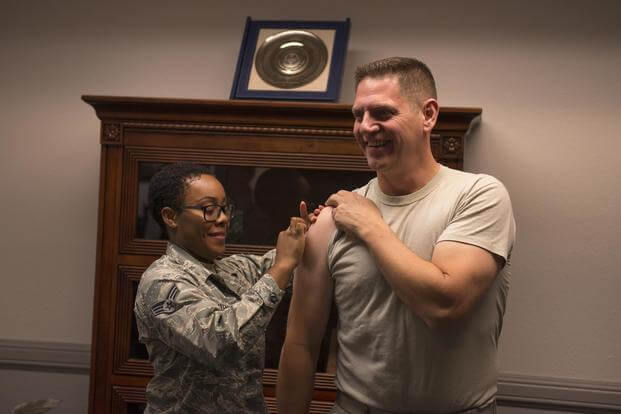The Air Force is planning to reorganize its medical personnel teams in an effort to get help sick airmen get healthy and off the non-deployable list.
The Air Force Medical Service announced it will start implementing a new structure under the "Air Force Medical Reform model" to create provider care teams aligned with an operational medical readiness squadron in an effort to make more airmen meet deployability status, the service said in a release last week.
"This new structure optimizes both priorities and allows us to return airmen back to full mission capability as quickly as possible without decrementing care to our beneficiaries," said Brig. Gen. Susan J. Pietrykowski, Office of the Air Force Surgeon General director of manpower, personnel and resources.
"Restructuring where care is delivered lets our providers focus on each group to improve the quality of care, create efficiencies, and most importantly, get injured or ill airmen back into the fight more quickly," she said in the June 27 release.
Related content:
- How Mattis Made the Whole Military Obsessed with 'Lethality'
- Air Force Releases Deploy-or-Out Policy Guidelines
- Army, Air Force Struggle to Finalize New Deploy-or-Out Policy
The Air Force will initially roll out the model to 43 service military treatment centers in the continental U.S., it said.
The service said its decision is based on a pilot program that started last year at the 366th Medical Group, Mountain Home Air Force Base, Idaho. The experiment -- which split the medical group into two squadrons -- generated notable results by getting about 100 airmen cared for or treated in nearly six months, officials said.
"We had more than 400 airmen on the base who were considered 'non-mission capable' when we launched in March 2018," said Col. Steven Ward, the 366th Medical Group commander. "In six months, we reduced that number by nearly one-fourth. Our provider teams focused relentlessly on getting airmen back into the fight."
The pilot program sought to engage with airmen before airmen made the move to seek out care on their own. The provider care teams would "visit with airmen in their duty locations to understand the personal and workplace challenges they face and partner with unit leaders to proactively manage airmen's care and minimize downtime," according to the release.
The initiative comes as the Pentagon has been implementing reforms to increase its readiness levels and to keep troops "lethal" for the fight.
Last year, then-Defense Secretary Jim Mattis announced a new policy requiring each service to track and report non-deployable service members on a monthly basis to determine whether the troops were in a temporary or permanent status.
The policy, known as DoD Instruction 1332.45 "Retention Determinations for Non-deployable Service Members," took effect Oct. 1.
To coincide with the policy, the Air Force in February issued new guidelines for active duty, reserve and National Guard airmen considered non-deployable; officials immediately began flagging those airmen unable to deploy for 12 consecutive months for separation consideration.
Non-deployable airmen who hit the 12-month mark are flagged for evaluation on a case-by-case basis.
Officials have consistently said it is difficult to pinpoint exactly how many service members have waded into non-deployability status because the "temporarily non-deployable" list fluctuates on a daily basis.
The service earlier this year said it had estimated that only 0.5 percent of airmen would be affected by the new retention evaluation guidelines, but the percentage could be even lower due to additional exemptions already under consideration. In total, fewer than 1,000 airmen were likely to be affected by the policy change, officials said at the time.
The Air Force said the new team effort is fluid, and does not include a variety of treatment centers under the initiative, although they could be incorporated at a later date.
For example, "medical centers, hospitals, ambulatory surgical centers, graduate medical education facilities, overseas military treatment facilities and limited scope facilities will not initially move to the new organizational model," the release said.
There will be separate teams aligned to a health care operations squadron that will care for non-active duty patients, which includes the families of service members and military retirees, it said.
"The current version of this new model isn't final. It will continue to evolve as we roll it out to other locations and get a better understanding of each total force population's specific needs," Pietrykowski said.
The move also comes as the service is preparing for the Defense Health Agency to assume a larger role in military medical treatment.
"The next phase of Medical Health System reforms will administratively transition the military treatment facilities of all military services to DHA responsibility October 1, 2019," the release said.
-- Oriana Pawlyk can be reached at oriana.pawlyk@military.com. Follow her on Twitter at @oriana0214.












